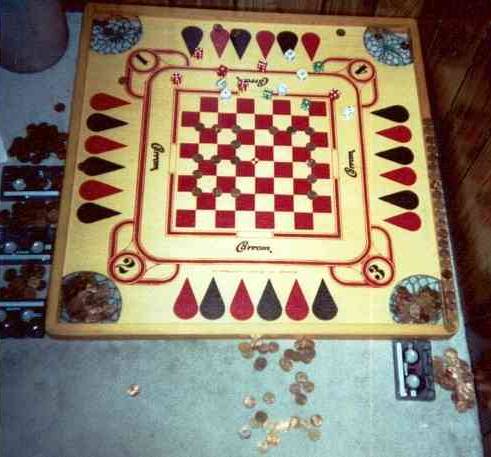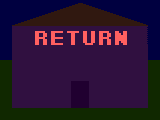
How do you play Hit-a-bump version 2?
1. Introduction and required items
Version 2 is a little more complicated and uses any type of card such as normal playing cards, flash cards, UNO cards, whatever. You don't need much either. Also, version 2 is a lot like version 1 except for one difference: the principal of overlapping. Here's what you need in order to play:
30+ playing cards [size doesn't make a difference, but try to keep it no smaller than 2 by 1.5 inch [5.08 cm by 3.81 cm], however, if you have a deck with a lot of missing cards, it is strongly recommended that you use those as you might lose some.]
1 field about 8 feet by 8 feet.
2. Game setup
Simply count at least 30 cards. The bigger your area you wish to play in, the more you'd want to have. Let's use a 8 foot by 8 foot room as an example with nothing in it and a standard 52-card playing deck. You can have clothes and other stuff scattered around the room as added challenges. This game is made for indoor play as the wind might carry your cards off to unexpected places outdoors.
After you got the room the way you want it, place level cards in certain manner as shown below:

Arrange your cards in levels sort of like this. The spacing as shown here is the way it's supposed to be. If you're doing level 13, for example, you'd make 1 on the left side then a 3 on the right side with a one column gap between the two numbers. The space is a single column of nothing. This particular level setup is just recommended. Right away, you can make any pattern or design you wish that has at least five cards. You can have it to something like 200 if you want, however, you must have that many plus two extras in your stock [in this case, a minimum of 202 cards is required]. You can use up all but two as a maximum. So, if you go for the minimal number of cards [30], you can use a maximum of 28 out in the field. The field is the room.
3. How to play
Now that you have the game setup, you're ready to play. All you have to do is to throw the cards slowly so that they land on top of the other cards. Unlike version 1, they must be overlapping after landing and coming to a complete stop. This is the first version that actually introduces overlapping. If your thrown card is on top of another card simply remove both of them. If your thrown card is not on top of any card, just leave it there and use another. If your thrown card is on top of two cards, move all 3 cards. If it is over 4, remove them, plus one of your choice [regardless of distance]. If it is over 5 cards, remove them and two of your choice. If it is over the maximum possible of 6 cards, remove them and four of your choice. To throw the card in the correct way for optimal distance, follow the steps below:
- pick up your card and position it in your hand so that the longest side of the card is perpendicular to the palm of your hand. Make sure your thumb and pointer finger are grasping the card and that the card has one inch inward from the outer edge of your thumb.
- move your hand back by turning it counterclockwise [if you're right-handed] or clockwise [if you're left-handed]. Move your elbow in so that the card is closer to you while turning your hand.
- extract your elbow and turn your hand clockwise [if you're right-handed] or counterclockwise [if you're left-handed] and release the card keeping it level. This'll ensure that it gets quite far. The more the card is parallel with the ground, the lesser the effect drag has on it and the further it goes. Also, if you add a lot of spin, it creates the helicopter effect providing more lift getting it even further!
If, while playing, you clear all level cards [the cards that form the numbers that indicate your level, go to the next level by placing the cards in an open spot. If there are no open spots, you cannot make the next level until you get enough space.
There is no scoring and the game has no end, unless, of course, if you run out of cards. If that happens, simply restart the level. That covers version 2. Try another version and see.
Learn about another version with the following links:
Hit-a-bump home
Hit-a-bump version 1
Hit-a-bump version 2
Hit-a-bump version 3
Hit-a-bump version 4
Hit-a-bump version 6
Hit-a-bump version 6 board construction
Footnotes:
There are no footnotes for this page.







